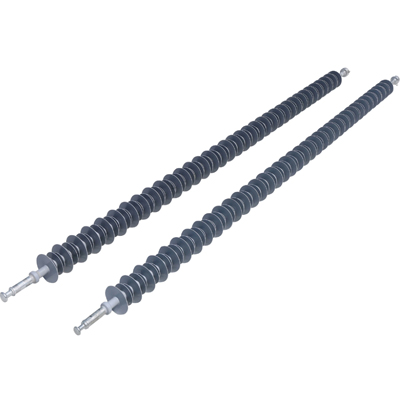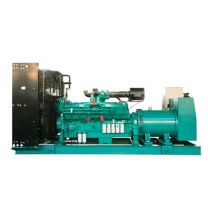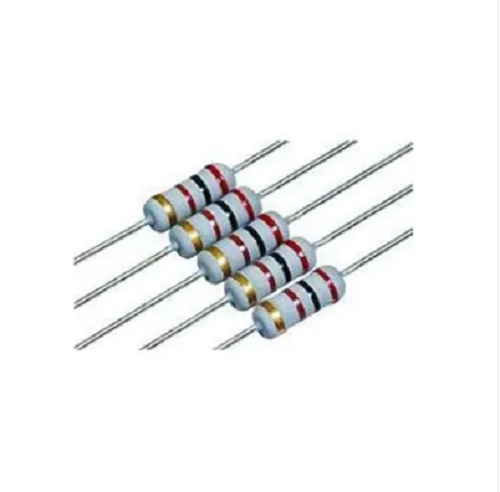How Do You Select A Polymer Insulator?
Different types of insulators are available for application on overhead transmission lines, including glass or porcelain string insulators, porcelain long-rods and composite/polymeric insulators. Within each category there are also a range of designs, materials, qualities and prices. At the same time, there are also several alternatives available to improve performance of insulators intended for polluted service areas, from advantageous shed profiles to coating with RTV silicone material.
How Do You Select Polymer Insulators?
When used as a direct replacement for porcelain, equivalent polymer insulators offer a variety of advantages. Find out what properties to consider when transitioning from porcelain strings to polymer insulators.
When looking at polymer insulators, we consider several factors that determine superior material and product performance. But ultimately you need to ask, how do you begin to replace porcelain strings with polymer insulators?
110kV Polymer Suspension Insulator
To do this, we need to consider equivalence. This is how we set our criteria, enabling us to determine which properties are critical for switching to polymers.
This brief overview covers the insulator properties that need to be considered when looking for a suitable polymer equivalent to porcelain strings.
Physical and electrical properties
There are two main types of functional performance equivalence, namely physical and electrical properties.
There are two aspects of physical equivalence. These are defining the mechanical strength of the porcelain bell and determining the appropriate section length. Polymer insulator designs offer a variety of strength ratings and the ability to effectively match section lengths. This minimises the impact on the existing porcelain bell string design.
The electrical characteristics must then be analysed for suitability to the system voltage. The three types of stress usually considered are
Additional reading:
Understanding the Distinction: J-Bolt vs. Anchor Bolt
Advantages and Applications of Metal Glazed Film Resistors
The Ultimate Guide to Portable Power Stations: Everything You Need to Know
Why is an LFP Battery a Reliable and Long-Lasting Energy Storage Solution for Portable Power Stations?
What Are the Benefits of Using an Electric Under Blanket for a Restful and Warm Night's Sleep?
Surface Mount Package Sizes
Gas Insulated Switchgear: Enhancing Electrical Grid Performance
60 Hz power frequency
Switching impulse
Lightning impulse voltages
The electrical characteristics of the insulators must therefore be verified after selecting the appropriate strength and size.
Beyond other electrical stresses, transmission line flashovers at nominal system voltage are often caused by contamination build-up on the insulator string. Therefore, comparing leakage distances of insulators is important for determining performance under these conditions.
500kV Polymer Suspension Insulators
Making comparisons
The ultimate strength of porcelain suspension insulators is characterised by porcelain electromechanical (M&E) values. For polymer suspension insulators, the equivalent measure is the specified mechanical load (SML).
To select a polymer insulator of the right strength, choose an insulator with an SML equal to or greater than the M&E value of the porcelain insulator. From there, knowing the electrical rating required for the line will ensure that the polymer insulator meets the specific design criteria.
In many cases, a polymer insulator with a similar SML will meet or exceed the required electrical rating. Providing increased leakage distances is dependent on the bobbin profile, resulting in improved contamination performance on the same cross-sectional length of porcelain string.
More considerations for moving from porcelain to polymer insulators
SAA Grid polymer insulators can provide an effective alternative to porcelain strings when the appropriate characteristics of the transmission line and components are taken into account.
For more information and consultation, contact us here!
Exploring the Versatility and Benefits of Electrical Flexible Conduit
Factors to Consider when choose LCD Module
Advantages and Applications of Gas Insulated Switchgear
Advantages of SIP Trunking
Understanding ESD Protection: How PCB Consumables Prevent Static Damage
The Anatomy of Precision Instruments PCBA
SMT PCB Buffer vs. Conveyors: Which Is Better for Your Assembly Line?
Previous: Understanding the Distinction: J-Bolt vs. Anchor Bolt
Next: Camera Module with Free Driver - An Affordable and Convenient Solution
Related Articles
If you are interested in sending in a Guest Blogger Submission,welcome to write for us!










Comments
0